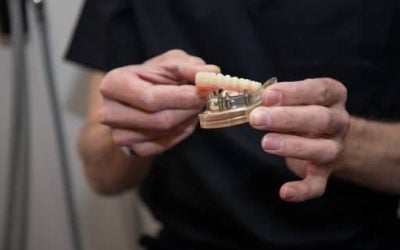Our team of doctors combines their years of experience and training to provide the best possible experience for every patient. We offer both cleft lip and cleft palate treatment in Nashua, NH. If your child is in need of treatment, call our team today to schedule your consultation.
Cleft Lip
When a baby is developing during pregnancy, different areas of the face are formed separately and are later joined together. This separate development happens in various areas, including both sides of the lips and the roof of the mouth. When these parts are joined together, in some instances they may not meet correctly. A cleft lip occurs when that separation affects the upper lip.
Reasons for Cleft Lip Treatment
A cleft lip leaves an opening in the upper lip between the nose and the mouth. This causes what appears as a split in the lip. The severity of the split ranges from mild to severe. A cleft can occur on one side or both sides of the lip.
Cleft Palate
The roof of the mouth is referred to as the palate. You can find your palate when you move your tongue over the roof of your mouth. The palate aids in speech and also separates your mouth and nose. A cleft palate also develops during pregnancy and can range in severity. Around one out of every 800 babies are born with a cleft defect.
A child can have a cleft palate, cleft lip or both. In most cases, surgery is needed to correct the cleft lip or cleft palate. Surgery can treat the cleft defect and improve eating, speaking, hearing and psychological development.
Cleft Lip Treatment
Typically, the cleft lip surgery can be scheduled once a child is around ten years of age. This surgery may be single or may require a second surgery depending on the outcome. The goals of cleft lip surgery are:
- To close the separation
- Restore muscle function
- Give a normal shape to the mouth
- Improve nostril deformity
Cleft Palate Treatment
With cleft palate treatment, normally surgery can be scheduled between the ages of 7-18 months old. In some cases, adults or teenagers may need this procedure due to injury or corrective surgery. There may be other health problems that cause delays in surgery, however your child’s doctor can inform you of the best recommended time for treatment. The goals of cleft palate treatment are:
- Close the space between the nose and the roof of the mouth
- Make the palate work by reconnecting the muscles
- Allow the palate to function properly by making the palate the proper length
What to Expect Following Surgery
With cleft lip and palate treatment, each case is different. Following treatment, the child will be able to swallow foods and liquids much easier. Unfortunately, in some cases the repair may split and create a hole between the mouth and nose. Depending on the size of the hole, another surgery may be needed. A large split can affect speech and cause difficulty when eating.


